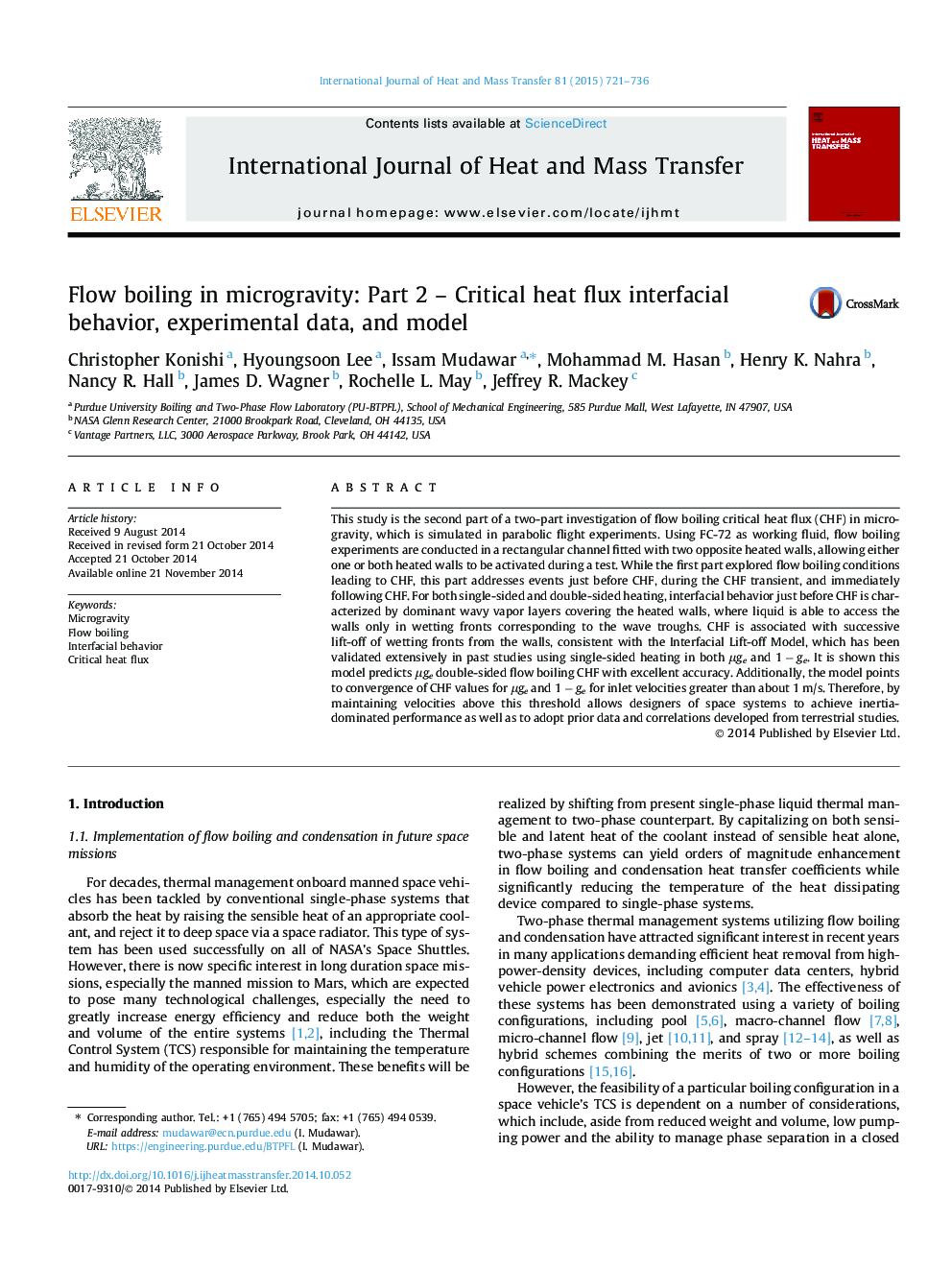| Article ID | Journal | Published Year | Pages | File Type |
|---|---|---|---|---|
| 656874 | International Journal of Heat and Mass Transfer | 2015 | 16 Pages |
Abstract
This study is the second part of a two-part investigation of flow boiling critical heat flux (CHF) in microgravity, which is simulated in parabolic flight experiments. Using FC-72 as working fluid, flow boiling experiments are conducted in a rectangular channel fitted with two opposite heated walls, allowing either one or both heated walls to be activated during a test. While the first part explored flow boiling conditions leading to CHF, this part addresses events just before CHF, during the CHF transient, and immediately following CHF. For both single-sided and double-sided heating, interfacial behavior just before CHF is characterized by dominant wavy vapor layers covering the heated walls, where liquid is able to access the walls only in wetting fronts corresponding to the wave troughs. CHF is associated with successive lift-off of wetting fronts from the walls, consistent with the Interfacial Lift-off Model, which has been validated extensively in past studies using single-sided heating in both μge and 1 â ge. It is shown this model predicts μge double-sided flow boiling CHF with excellent accuracy. Additionally, the model points to convergence of CHF values for μge and 1 â ge for inlet velocities greater than about 1 m/s. Therefore, by maintaining velocities above this threshold allows designers of space systems to achieve inertia-dominated performance as well as to adopt prior data and correlations developed from terrestrial studies.
Related Topics
Physical Sciences and Engineering
Chemical Engineering
Fluid Flow and Transfer Processes
Authors
Christopher Konishi, Hyoungsoon Lee, Issam Mudawar, Mohammad M. Hasan, Henry K. Nahra, Nancy R. Hall, James D. Wagner, Rochelle L. May, Jeffrey R. Mackey,
